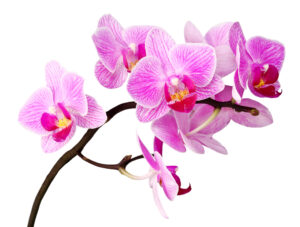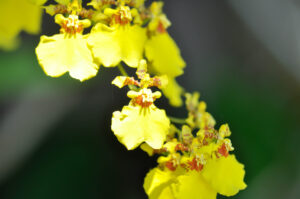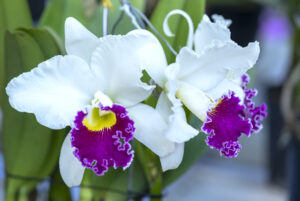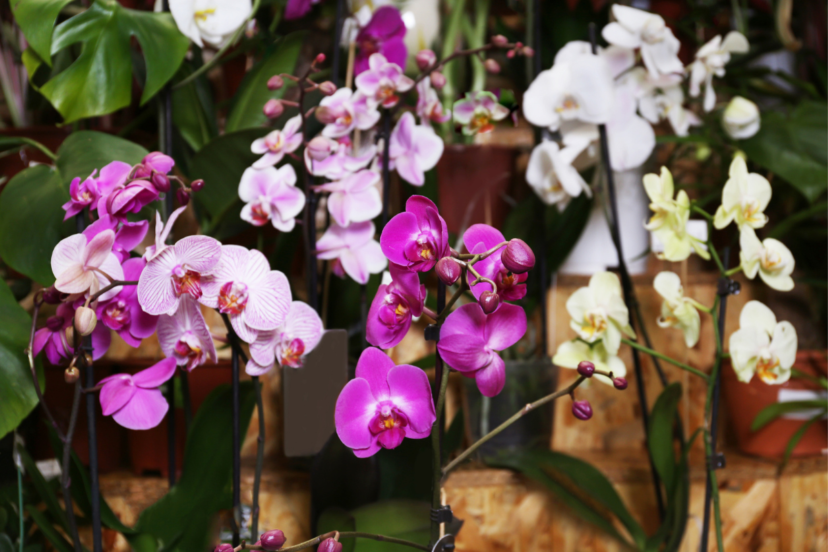Hydroponic Orchids: A Guide for Enthusiasts
Introduction to Hydroponic Orchids
Hydroponic gardening is a revolutionary way to grow hydroponic orchids and many other plants without soil, using nutrient-rich water. This method offers numerous benefits for cultivating orchids, a beloved flower known for its beauty and variety.
Understanding Hydroponic Systems
At its core, hydroponics involves suspending roots in a nutrient solution, providing direct access to essential nutrients. This method eliminates soil-borne diseases and pests, promoting healthier growth.
Why Choose Hydroponics for Orchids?
Hydroponics allows precise control over the growing environment, which is crucial for orchids. These delicate plants thrive under specific conditions that are easier to maintain in a hydroponic setup.
The Basics of Hydroponic Orchid Care
Selecting the right orchid variety is crucial. Some species adapt better to hydroponic cultivation than others. Phalaenopsis and Dendrobium, for example, are excellent choices for beginners.
Essential Components of a Hydroponic System
A basic hydroponic system for orchids includes a growing medium, such as LECA (Lightweight Expanded Clay Aggregate), a reservoir for the nutrient solution, a pump for circulation, and a lighting system if natural light is insufficient.
Setting Up Your Hydroponic System
The location is key. Orchids need ample light but should be protected from direct sunlight. An east-facing window or a spot with bright, indirect light is ideal. Assembling the system requires some DIY skills, but it’s a rewarding process.
Nutrient Solutions and Water Management
Orchids have specific nutrient needs. A balanced, orchid-specific hydroponic nutrient solution is vital. Monitoring the pH and conductivity of the solution ensures that the orchids absorb these nutrients effectively.
Light Requirements and Management
While some orchids thrive in natural light, others may require artificial lighting. LED grow lights are a great option. Light scheduling is also important; most orchids need about 12-14 hours of light per day.
Temperature and Humidity Control
Orchids generally prefer a temperature range of 65-75°F (18-24°C) and high humidity. In a hydroponic system, controlling these factors is more straightforward, leading to healthier plants and more vibrant blooms.
Best Choices for Hydroponic Orchids
1. Phalaenopsis (Moth Orchids)

- Growing Conditions: Phalaenopsis orchids thrive in warm conditions, with daytime temperatures between 70-80°F (21-27°C) and nighttime temperatures not dropping below 60°F (15°C). They prefer high humidity, ideally around 60-70%.
- Lighting Requirements: These orchids need moderate light levels. East-facing windows are ideal, providing gentle morning sunlight. If natural light is insufficient, artificial grow lights can be used, ensuring about 12-14 hours of light per day.
- Care Tips: Watering is crucial; the medium should be moist but not waterlogged. Fertilize with a balanced, orchid-specific nutrient solution, and adjust the pH to around 5.8-6.5. Phalaenopsis orchids also benefit from air movement, so consider a gentle fan in the growing area.
2. Dendrobium

- Growing Conditions: Dendrobium orchids prefer slightly cooler temperatures than Phalaenopsis, with daytime temperatures around 65-75°F (18-24°C) and nights at 55-65°F (13-18°C). Humidity levels should be around 50-70%.
- Lighting Requirements: These orchids enjoy bright light but should be protected from direct midday sun. A south-facing window with some shading or diffused artificial light works well.
- Care Tips: Allow the growing medium to dry slightly between waterings. Dendrobiums are light feeders, so a less concentrated nutrient solution is often sufficient. They also require a period of cooler temperatures and reduced watering in the fall to initiate blooming.
3. Oncidium (Dancing Lady Orchids)

- Growing Conditions: Oncidiums prefer intermediate to warm temperatures, similar to Phalaenopsis. They are adaptable but do best with daytime temperatures of 70-80°F (21-27°C) and nights around 60-65°F (15-18°C).
- Lighting Requirements: These orchids require bright, indirect light. A west or south-facing window covered with a sheer curtain can provide ideal lighting conditions. In low light conditions, supplement with artificial lights.
- Care Tips: Oncidiums prefer more frequent watering than Dendrobiums but less than Phalaenopsis. The growing medium should not completely dry out. They respond well to higher humidity and benefit from regular misting.
4. Cattleya

- Growing Conditions: Cattleyas enjoy warmer conditions, with daytime temperatures of 75-85°F (24-29°C) and night temperatures around 60-65°F (15-18°C). They thrive in moderate to high humidity, around 50-70%.
- Lighting Requirements: These orchids require high light levels, more than Oncidiums and Phalaenopsis. A south-facing window with some shading during the hottest part of the day is ideal. Artificial lighting can supplement natural light if necessary.
- Care Tips: Cattleyas need a well-draining medium and should be allowed to dry out slightly between waterings. They benefit from a balanced nutrient solution, and maintaining proper air circulation is crucial for preventing diseases.
General Tips for Hydroponic Orchid Care
- Water Quality: Use filtered or rainwater for your hydroponic system to avoid chlorine and other chemicals found in tap water.
- Nutrient Solution: Use orchid-specific hydroponic nutrients and maintain the pH between 5.5 and 6.5 for optimal nutrient uptake.
- Monitoring and Adjustments: Regularly check the system for proper functioning. Adjust light, temperature, and humidity as needed to mimic the orchid’s natural environment.
- Cleaning and Maintenance: Keep the hydroponic system clean to prevent the buildup of algae and pathogens. Regularly clean and sterilize containers, pumps, and other components.
By understanding the specific needs of each orchid variety and maintaining the right conditions in your hydroponic system, you can enjoy thriving, blooming orchids year-round.
Common Challenges in Cultivating Hydroponic Orchids
Pests and diseases can still affect hydroponic orchids, although less frequently than in soil-based systems. Vigilance and regular inspections are crucial. Nutrient deficiencies, often indicated by leaf discoloration, are another common challenge but can be managed with proper nutrient management.
Pruning and Maintenance of Hydroponic Orchids
Regular pruning encourages healthy growth and more blooms. Removing dead or diseased foliage and spent blooms helps the plant focus its energy on new growth.
Blooming and Propagation
Encouraging orchids to bloom in a hydroponic system can be a delicate process, often requiring adjustments in lighting and temperature. Propagation, while challenging, is rewarding and can be done through division or keiki development.
Advanced Tips for Hydroponic Orchid Care
As you gain experience, experimenting with different orchid varieties and fine-tuning your system can lead to even more impressive results. Understanding each variety’s specific needs is key.
Environmental Benefits of Hydroponic Orchids
Hydroponic systems are more sustainable than traditional soil cultivation. They use less water and reduce the need for pesticides, benefiting the environment.
Conclusion
Hydroponic orchid cultivation is a rewarding hobby that combines the beauty of orchids with the efficiency and control of hydroponics. With the right knowledge and tools, anyone can enjoy the benefits of this unique gardening method.
FAQs
Can hydroponic orchids be grown indoors year-round?
Yes, hydroponic orchids can be successfully grown indoors throughout the year. The controlled environment of a hydroponic system allows for the regulation of factors such as light, temperature, and humidity, which are crucial for orchid growth. With proper care and the right conditions, hydroponic orchids can thrive indoors regardless of the outdoor climate.
How do I control pests in my hydroponic orchids?
Pest control in hydroponic systems involves regular monitoring and preventive measures. Keep the area clean and inspect your orchids regularly for signs of pests. If pests are detected, you can use insecticidal soaps or neem oil as safe and effective treatments. It’s important to avoid harsh chemicals that can harm the hydroponic system and the orchids.
What are the signs of nutrient deficiency in hydroponic orchids?
Signs of nutrient deficiency in hydroponic orchids can include yellowing or browning of the leaves, stunted growth, and a lack of blooms. Nitrogen deficiency often shows as yellowing of older leaves, while potassium deficiency can cause leaf edges to turn brown and crispy. Regularly checking and adjusting the nutrient solution can help prevent these deficiencies.
How do I manage root rot in hydroponic orchids?
Root rot in hydroponic orchids is often due to excessive moisture or poor air circulation around the roots. To manage it, first remove any affected roots, trimming them back to healthy tissue. Ensure the growing medium is well-aerated and allows for good drainage. Adjust your watering schedule to avoid over-saturation, and consider adding an air stone or increasing air flow to improve oxygenation around the roots.
Can I convert a soil-grown orchid to a hydroponic system?
Yes, it’s possible to convert a soil-grown orchid to hydroponics. Carefully remove the orchid from the soil, gently cleaning the roots to remove all soil particles. Trim any damaged or rotting roots. Gradually acclimate the orchid to its new hydroponic environment, initially keeping the humidity higher to reduce stress on the plant. Monitor the orchid closely during the transition period for any signs of stress.
What are the best systems for growing hydroponic orchids?
The best hydroponic systems for orchids are those that allow for good air circulation, drainage, and easy nutrient management. Systems like the Wick system, Water Culture, or the Ebb and Flow system can be effective. The choice depends on your space, the specific orchid variety, and your level of experience. Simpler systems like Wick or Water Culture are good for beginners, while Ebb and Flow offers more control for experienced growers.
Is it necessary to use a grow light for hydroponic orchids in a well-lit room?
Whether you need a grow light for hydroponic orchids in a well-lit room depends on the intensity and duration of natural light. Orchids generally require 12-14 hours of light per day. If your room doesn’t provide enough natural light, especially during the winter months, supplementing with a grow light is beneficial. A grow light can also be useful to provide a more consistent light source and to supplement light for specific light-intensive varieties.




